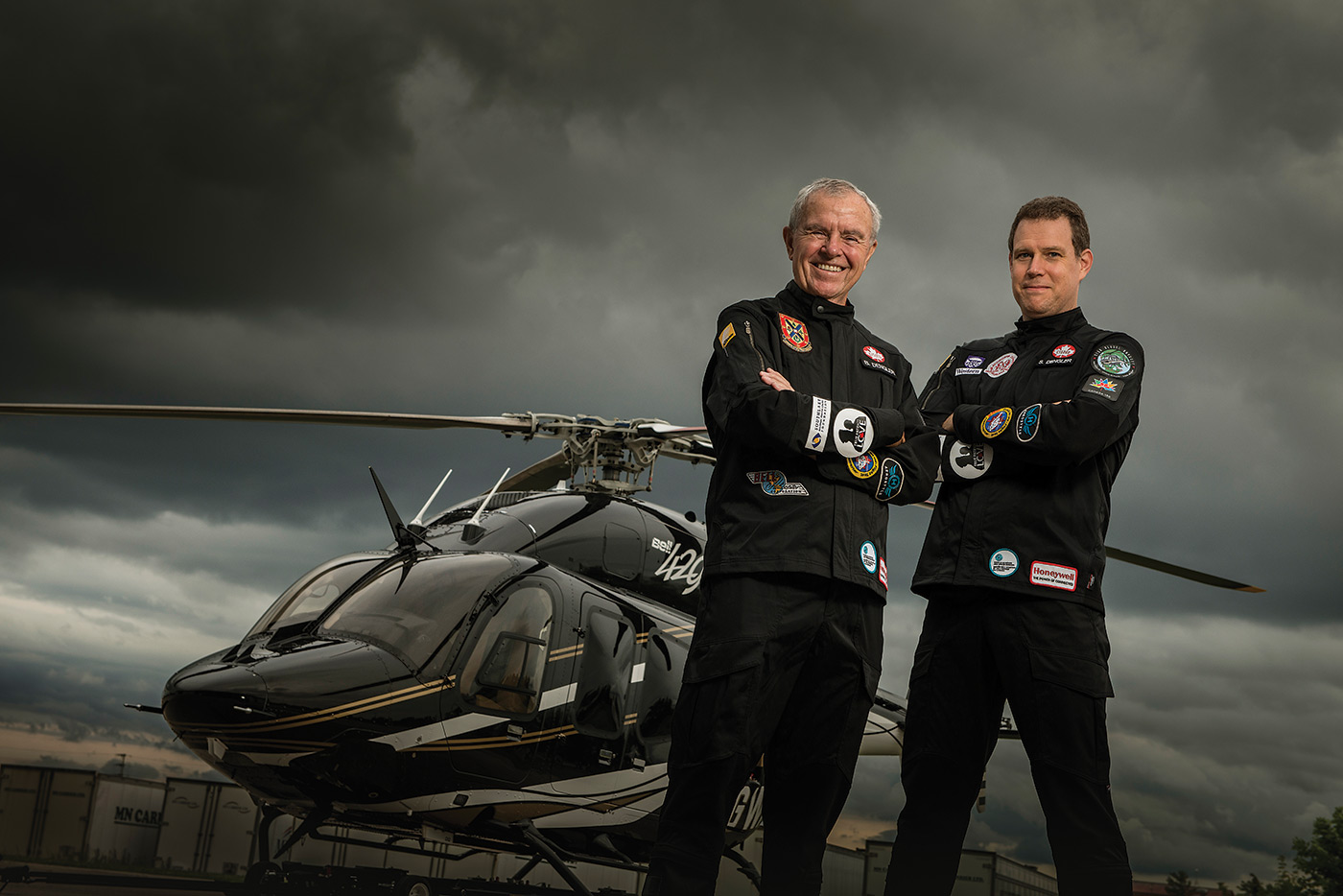A few days removed from a potentially historic helicopter journey around the world with his son Steven, Bob Dengler struggled to believe it had happened.
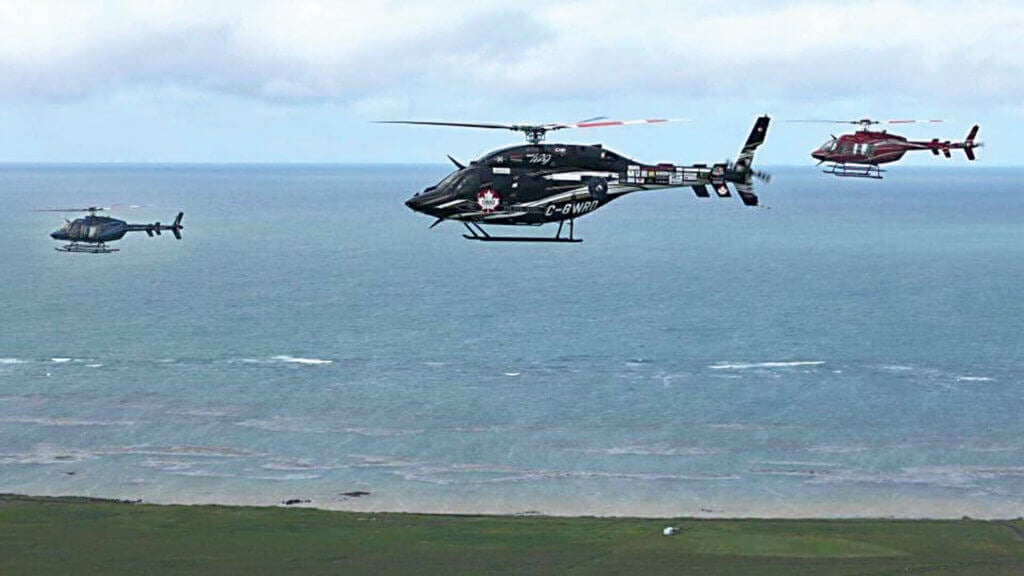
Bob and Steven, both successful businessmen and accomplished helicopter pilots who live in southern Ontario, touched down in Montreal in Bob’s Bell 429 helicopter on Aug. 17, 2017.
It was the final stop in a more than 37,000-kilometre journey that took them to every Canadian province, as well as Greenland, the United Kingdom, France, Russia, Alaska and other places in what they hoped would be the first circumnavigation of the globe by Canadians in a helicopter.
If certified by the Federation Aeronautique Internationale (FAI) in Switzerland, the Denglers believe they will also become the first father-and-son pilot duo to have circumnavigated the globe in any aircraft.
“It’s something that we don’t want to forget,” said Bob. “I think it was quite an achievement, and it’s done, we’re home, and we’re all safe, and that’s the good part.
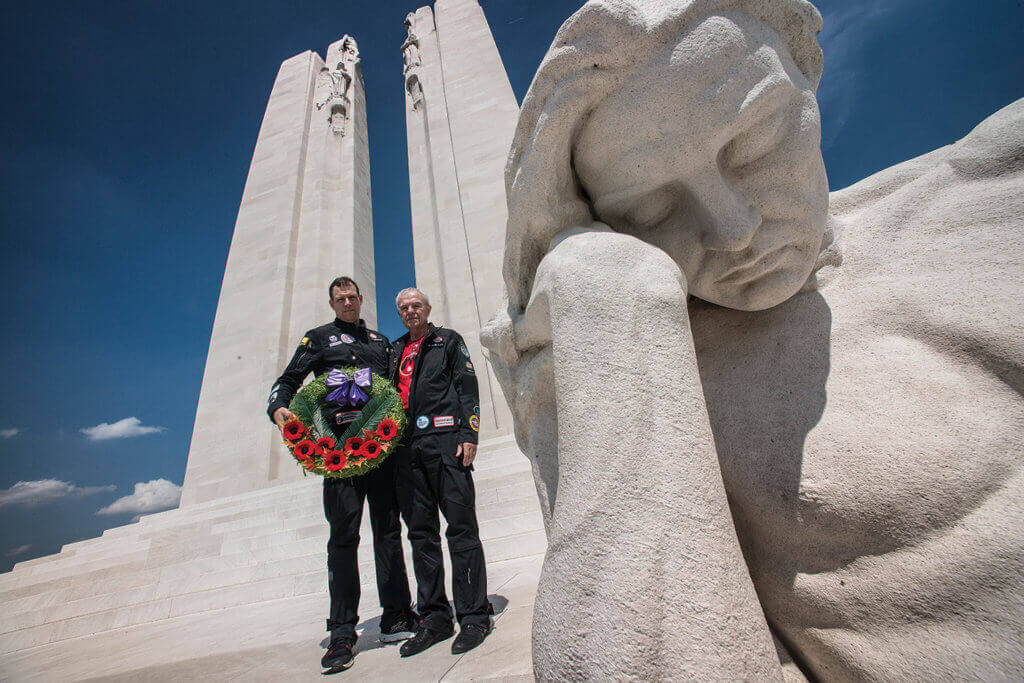
“We flew around the world . . . It’s surreal. Hard to believe it all happened.”
The feeling was different for Steven, who together with his wife Bruna put more than a year of planning into the 48-day journey.
“It’s the natural fruit of a lot of hard work from a lot of people,” said Steven. “It will always be one of the most amazing experiences of my life, and I just have immense gratitude to all the people that helped it–who really stood to gain nothing from it, except a sense of pride and involvement.”
Titled the C150 Global Odyssey because it coincided with the 150th anniversary of Canadian Confederation, the journey began July 1 in Vaughan, Ont., near Toronto and moved east to the Canadian Aviation and Space Museum in Ottawa, part of the city’s massive Canada Day celebrations.
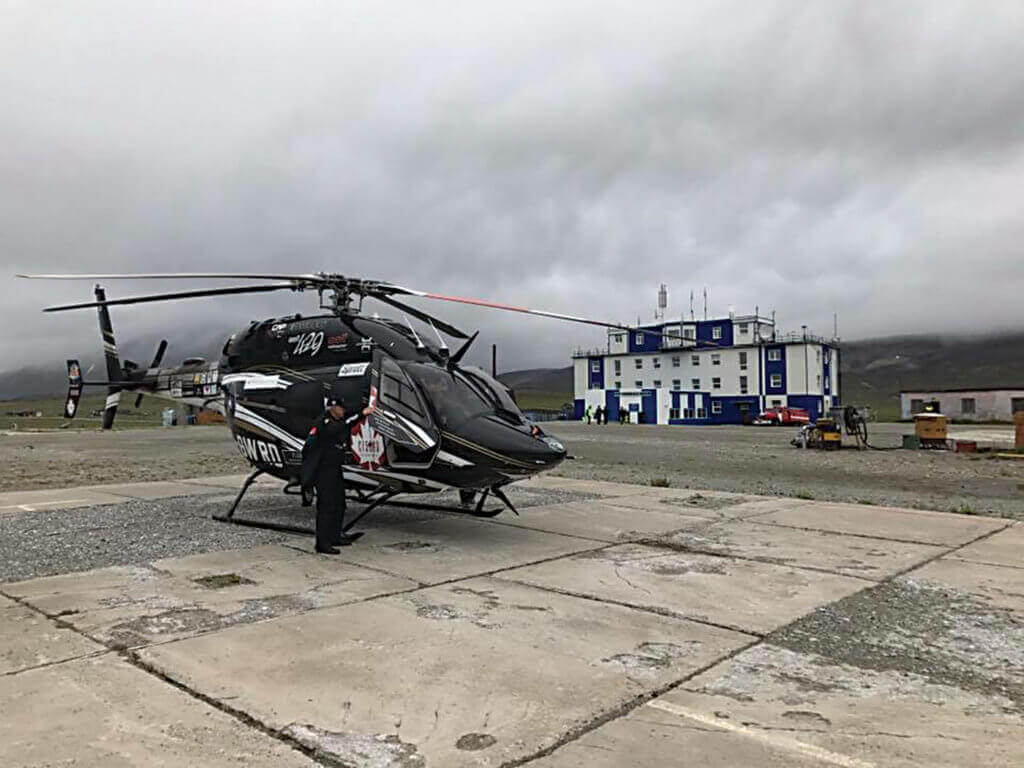
Dave Williams, a retired Canadian astronaut, flew with the crew from Vaughan to Ottawa, and the Denglers continued on to Montreal, where they picked up Hockey Hall of Famer Guy Lafleur, a friend who is also a long-time helicopter pilot. Lafleur stayed aboard until a stop in Fredericton, N.B., said Bob.
Also joining them at the initial stop in Montreal was Rob “Dugal” MacDuff, a retired Bell Helicopter test pilot who stayed with them for the remainder of the journey, serving as a safety pilot.
As a way of paying tribute to key moments in Canadian history, the journey made several stops in historically significant places, including Baddeck Bay on Cape Breton Island, site of the first airplane flight in Canada by J.A.D. McCurdy in 1909.
McCurdy’s grandson Gerald Haddon, who is also a former honorary colonel of the Canadian Forces School of Aerospace Technology and Engineering at 16 Wing Borden, Ont., was aboard the Bell 429 as it overflew Baddeck Bay, according to Bob.
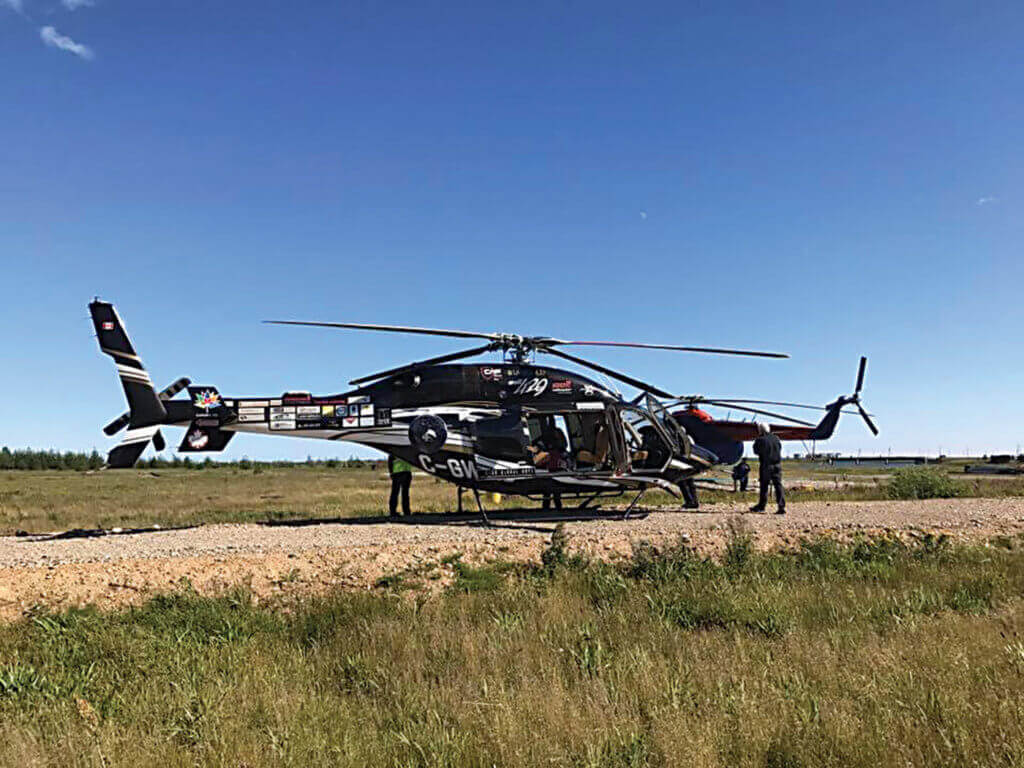
Other key stops included the Canadian National Vimy Memorial in France, where the pilots delivered a wreath honouring Canadians who fought in the Battle of Vimy Ridge, as well as a wreath honouring Newfoundlanders who fought in the Battle of the Somme.
The Newfoundland wreath was subsequently delivered to Beaumont-Hamel in France, said Bob, site of the Newfoundland Regiment’s tragic advance on July 1, 1916, an event that has become a symbol of the regiment’s valour and terrible wartime sacrifices.
The pilots also carried a brick that, according to Bob, was part of the original building where Guglielmo Marconi is believed to have sent the first transatlantic radio signals in 1901. After a ceremony in Newfoundland that recreated that first transmission, they delivered the brick to Poldhu, England, where the 1901 message is said to have been received.
“A lot of saluting, a lot of historical significance in my opinion,” said Bob.
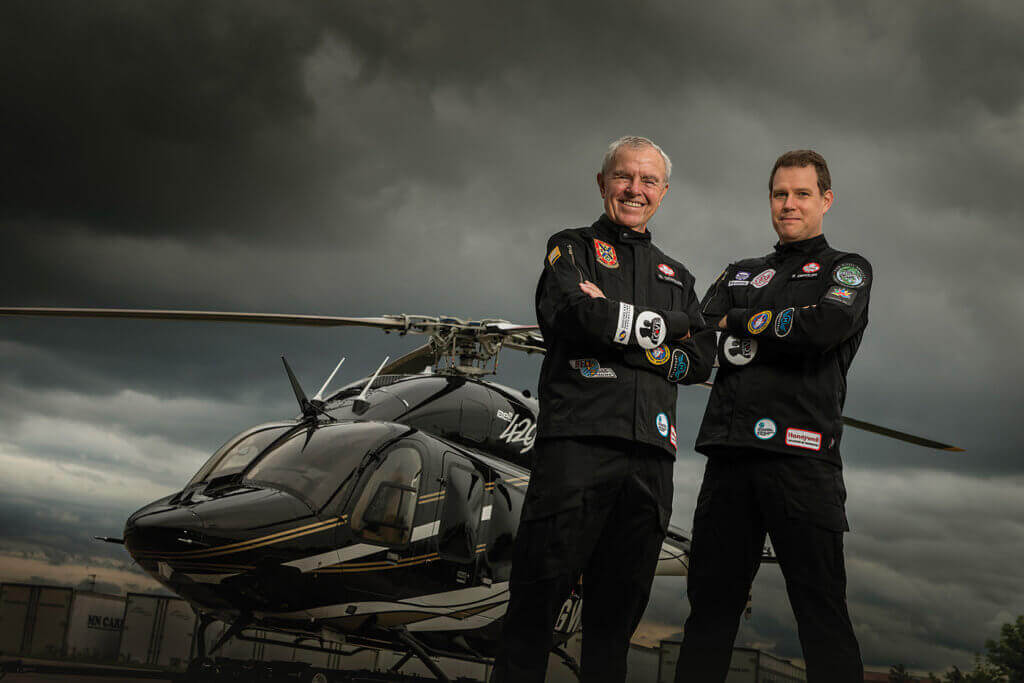
Getting to Europe was a challenge due to the weather, he added. They endured a five-day weather delay in Iqaluit, Nunavut, before flying north to the top of Baffin Island and across the North Atlantic Ocean to Greenland.
Another day was lost due to weather before they could fly to the northeast side of Greenland and then across to Reykjavik, Iceland. After yet another delay they continued to the Faroe Islands and then to Scotland, England, France and Prague in the Czech Republic, where they completed the first of two 50-hour maintenance stops at a Bell Helicopter facility.
They continued through Russia, then made an instrument flight rules (IFR) flight into Nome, Alaska, and from there to Whitehorse, Yukon, for a second 50-hour maintenance stop at Trans North Helicopters.
The journey moved east to Yellowknife, N.W.T., and then south to Fort St. John, B.C., and east again through every other Canadian province before wrapping up in Montreal. They had hoped to visit every provincial capital in Canada but were unable to visit Victoria, B.C., due to this summer’s devastating wildfires.
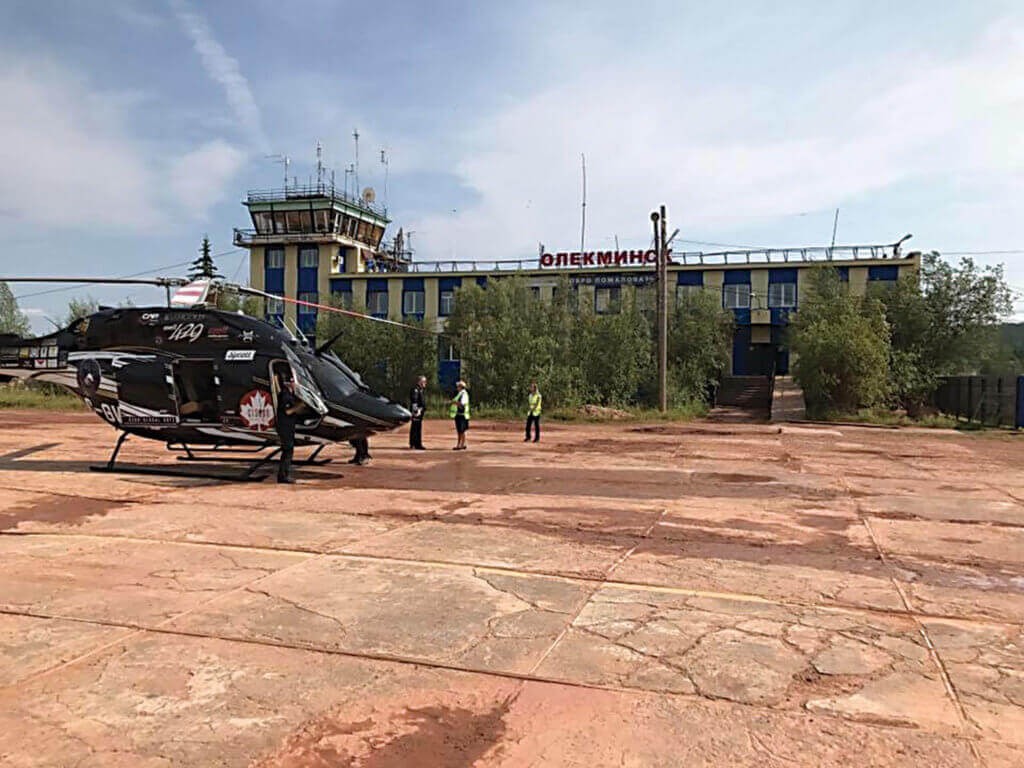
“We did get into Fort St. John, where we were met by the mayor,” said Bob. “We said, ‘We’d like to declare Fort St. John an honorary capital of B.C. to say that we’d gone to the capital of every province. And she said, ‘Well you can just drop the honorary title.’ ”
Their inability to stop in Victoria is not expected to affect the journey’s status as an official circumnavigation, though confirmation was unavailable at press time.
“Whether or not I get a piece of paper at the end of this really is not that important,” said Steven, referring to the circumnavigation diplomas the FAI may provide.
“I mean, the fact that we did this together, and the fact that this was an opportunity that I got that very few people ever get–that’s what’s important.
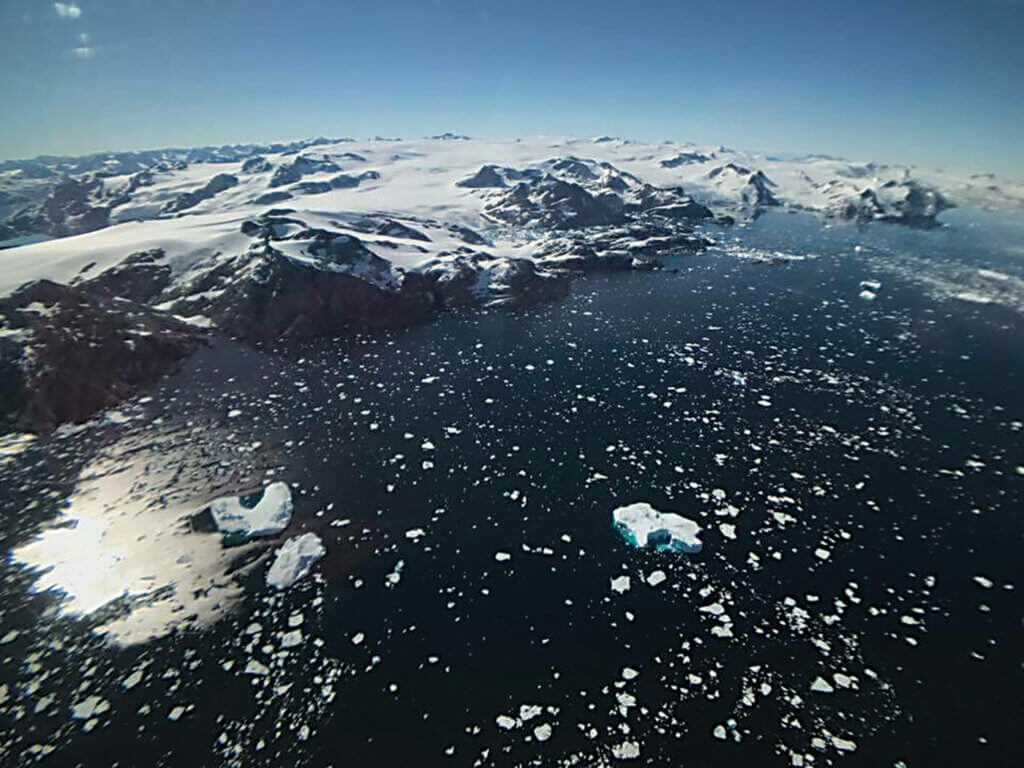
“The stories, the people I met, the way I personally grew–I don’t just mean as a helicopter pilot, I mean as a person along the trip–that’s an incredible experience.”
Steven made a point of exploring at virtually every stop, meeting people and conversing with them. He cited those interactions as the main highlight of the trip.
Both pilots spoke effusively about the Bell 429’s performance, with Bob saying it couldn’t have been better.
“I’m incredibly impressed by that helicopter,” added Steven. “The design team should be incredibly proud. They have one of the most advanced helicopters in the world, and it’s a dream to fly.”
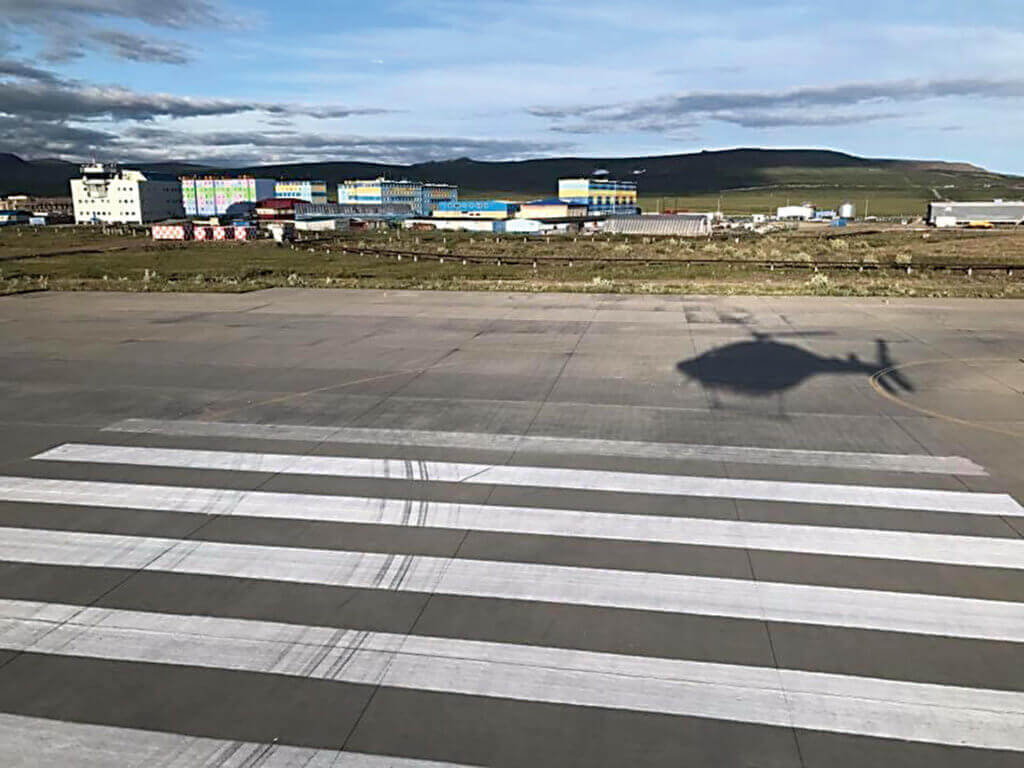
This was a trip that stretched them as pilots and helped them grow as people, something they will likely never forget. Whether or not it seemed surreal in the days afterward, it was full of the kinds of memories most pilots will never have.
“I’ve had the opportunity to meet amazing people all around the world that, without a doubt, will be friends for the rest of my life,” said Steven.
“What do I think of it from the other side? It’s gratitude. I’m just so incredibly grateful to have had the opportunity to do this … and it’s humbling.
“It’s humbling to think that you get to ride in that helicopter around the world, and so many people are working hard to make that happen.”





